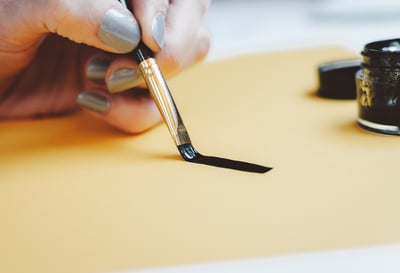 Creativity is the ability to make connections between two or more things in a unique manner. For many people, creative expression is one of the joys of life, and for others it is also part of their livelihood. A certain line in a poem or song lyric, or a color used in a painting can enhance our experience of life and allow us to see the world in a new way.
Creativity is the ability to make connections between two or more things in a unique manner. For many people, creative expression is one of the joys of life, and for others it is also part of their livelihood. A certain line in a poem or song lyric, or a color used in a painting can enhance our experience of life and allow us to see the world in a new way.
Creativity, as the midwife of invention, also leads us to new solutions for old problems, such as the weave of an undershirt that wicks away sweat during vigorous exercise, or a way to operate on people using the smallest incisions possible, thereby shortening their recovery time.
There is a persistent myth that people are either born creative or they’re not. To some degree, creativity does seem to be a matter of genetics. And yet, research also suggests that certain brain patterns, which are conducive to fostering creativity, can be enhanced. Scientists have noted that long-term practitioners of mindfulness meditation show higher levels of creativity than their non-meditating peers. In particular, the Open Monitoring (OM) method of meditation, in which the practitioner simply pays attention to whatever thought or sensation arises in the present moment, without judgment, increases scores on Alternate Use Tests (AUTs). (AUTs ask participants to list out as many uses as they can imagine for common household items such as a paperclip or a piece of string.) In a series of studies on OM meditation and creativity, the skill of observation was found to “not only [have] improved working memory, it also increased cognitive flexibility and reduced cognitive rigidity — all of which are critical to the creative process.”
Steve Jobs was a longtime practitioner of Zen meditation as a means of priming his creativity levels (as well as reducing stress and clearing his mind). He sought out teachers on the West Coast and even traveled to India to bolster his practice. Many observers have drawn a direct connection between Jobs’ meditation practice (a refining of the technology of the brain) and his ability to refine the technology of personal computing. Even the emphasis on simplicity in design can be traced to the Zen philosophy behind Jobs’ embrace of Zen meditation.
Questions to help shape your practice:
- What activities in your life are outlets for creative expression?
- What types of creative solutions do you need most in your life right now?
--
This post is a short excerpt from Edie Raphael's The Art of Being Present: Mindfulness Meditation for Work and Life. The full book (including 52 weeks of guided meditations) can be purchased here.
Credit: Photo by Kelly Sikkema on Unsplash




